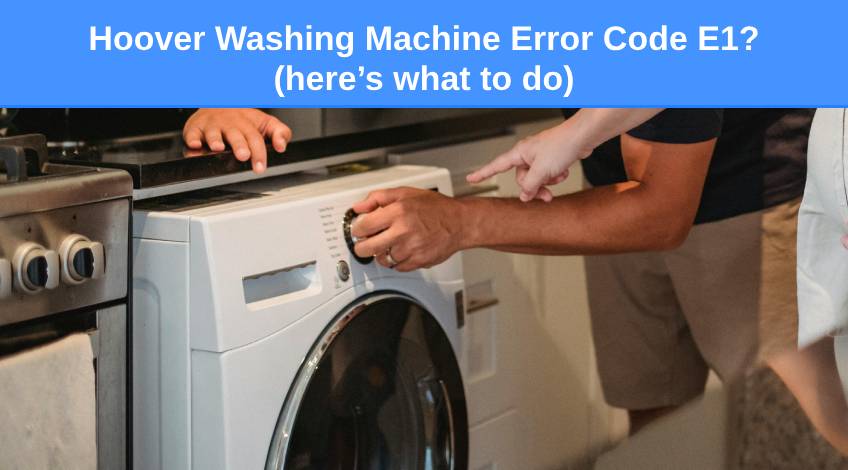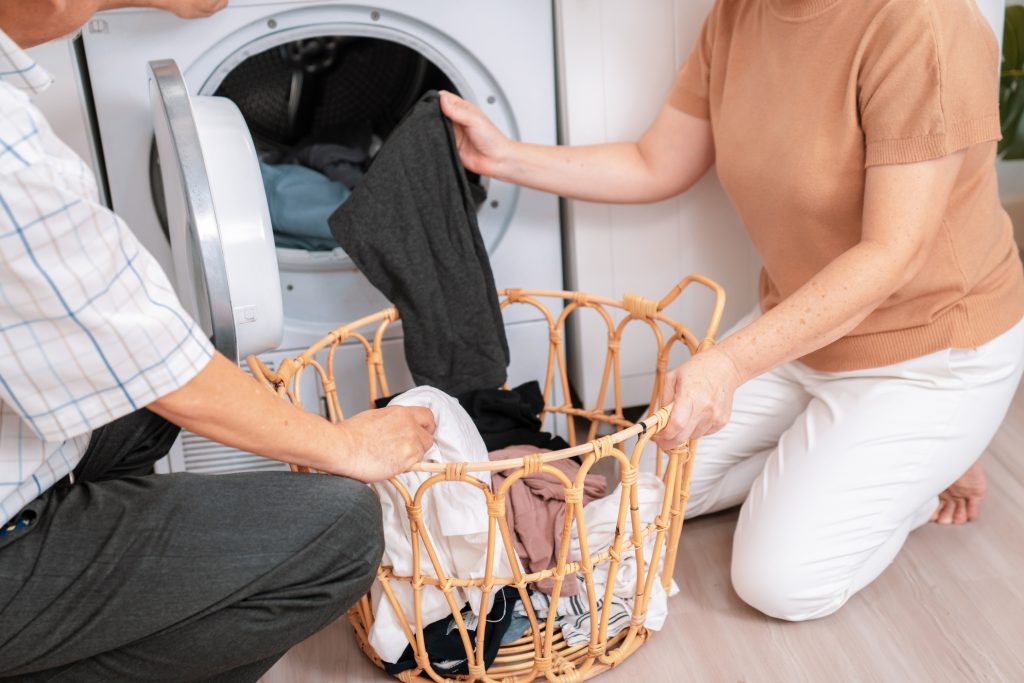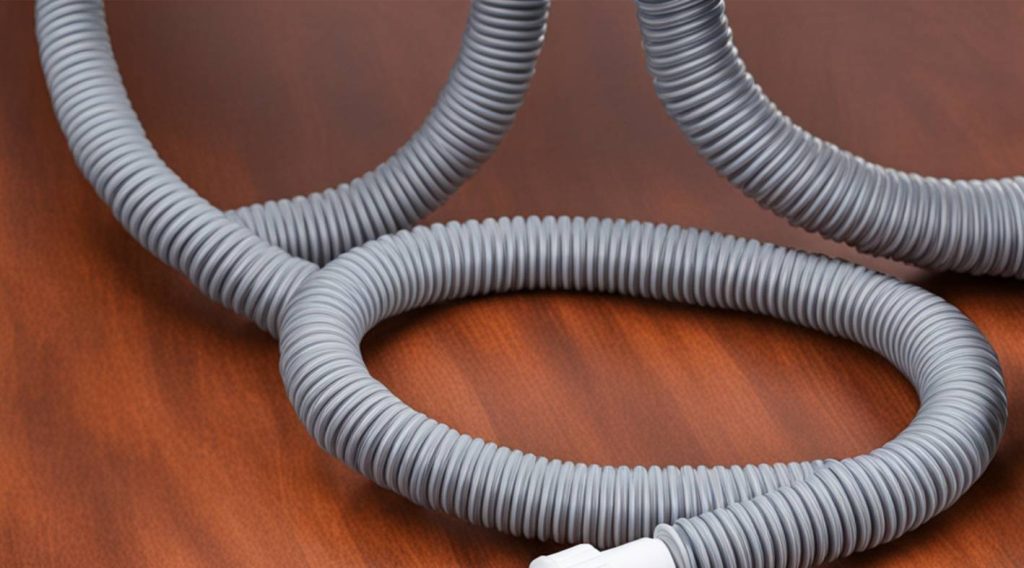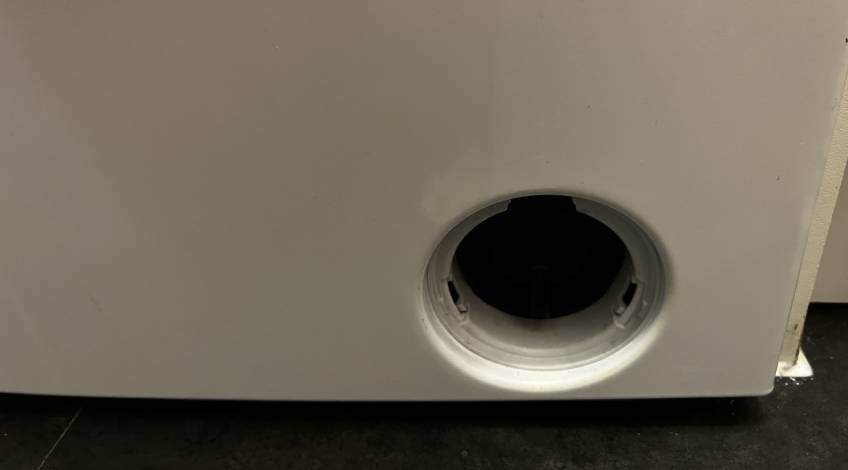
Hoover Washing Machine Error Code E1? (here’s what to do)
If you own a Hoover washing machine and it’s displaying an error code it can be worrying. You’re waiting for your laundry to get washed so you can get on with your day.
But the washer has stopped and is displaying an error code. If your Hoover washing machine is displaying the E1 error code, keep reading. In this article we take a close look at what the E1 error code means and more importantly, offer ways to fix it.
Please note: This article relates to the E1 Error code found on Hoover washing machines. This is not to be confused with the E01 error code which relates to a totally different fault.
What Does The E1 Error Code Mean On A Hoover Washing Machine?
The E1 error code will typically only be found on the old New Wave Hoover washing machines. It indicates that the washer has timed out when filling, heating or draining.
As this error code is connected to 3 different areas of the washer, it can be difficult to know exactly what’s wrong with the appliance. The timing out part is easy because all washing machines rely on set times for various functions.
If that particular function takes longer than it should, the PCB (printed circuit board) recognises that there’s a problem, and aborts the cycle as a safety measure.
However, because all 3 of the functions that could be affected by this fault are so separate from each other, you need to be more observant to get to the bottom of this error code.
You need to watch the machine to see exactly when the cycle aborts as this will give you a good indication as to where the fault lies. For instance;
- If the washing machine aborts the cycle at the very beginning of the cycle or when attempting to fill for the rinse cycle, it could have timed out on the fill.
- If it aborts during the wash cycle after successfully filling with water, it’s most likely timed out on heat.
- If it aborts after the wash cycle has completed, or during the rinse cycle, it’s probably timed out on drain.
Let’s take a closer look at each of these faults which could all be responsible for the E1 error code;
Hoover New Wave Washing Machine Timed Out On Fill

If your washer times out on fill, it indicates the machine has a problem getting enough volume of water within the set time. There are a few things that could cause this which include;
Twisted Or Blocked Inlet Hose
All of the water used for washing and rinsing your laundry enters the appliance via the inlet hose. If this is twisted, kinked or obstructed in some way, it will not allow enough water to enter in time to beat the set time.
It could just be that the inlet hose is twisted or the screen (or mini filter) that’s found in the end of the hose or in the entrance to the inlet valve, is clogged. These filters are just thin mesh screens that prevent grit from entering the inlet valve.
Over time, the screen can become clogged with grit or even limescale. You will need to remove the screen and clean it to remove anything that could cause an impeded flow of water into the washer.
You should also check that there are no visible signs of water leaking from the inlet hose. This could be enough to cause the cycle to time out.
Defective Inlet Valve
The inlet valve allows the water to enter the washer at exactly the right time in the cycle and runs until the timer shuts it down. If the inlet valve becomes faulty, it could either; prevent enough water from entering the washer, or allow too much water to enter leading to the drain time out.
Low Water Pressure
If the water pressure in your home is too low, not enough will flow into the washer in the set time. Sometimes this can be caused by making other demands on the water supply when the washer is trying to fill.
Check that no other taps are being used while the washer is filling. However, in some cases it could be due to the water supply to your home not having enough pressure.
You can check this by filling a 1 gallon (4.5 litre) bucket with cold water from the kitchen tap. If it takes 30 seconds or less to fill the bucket, the water pressure in your home is fine. If it takes longer, you’ll need to contact your local water authority.
Defective Pressure Switch
The pressure switch works by registering the changes in air pressure as water enters (or leaves) the washer. If the pressure switch develops a fault, it could prevent the washer from filling with enough water.
We recommend getting a technician to check and replace the pressure switch if necessary.
Hoover New Wave Washing Machine Timed Out On Heat

If your washer times out on heat it indicates a fault within the heating system which is preventing the temperature of the water achieving a set level in the set time. These faults include;
Defective Thermistor
The thermistor is basically a temperature sensor that monitors the temperature of the water in the washer. If it becomes defective, it can give a false reading and tell the PCB that the water temperature hasn’t reached the set level.
We recommend getting a technician to investigate and replace the thermistor if necessary.
Defective Heating Element
The heating element is responsible for heating all of the water that enters the washing machine. If it becomes faulty, it will fail to heat the water which could lead to the E1 error code.
This is another part best left to a technician to fix as it involves removing panels from the appliance.
Wiring Fault
There are many wires running to and from the heating system on a washing machine. Any one of which could have shorted (or burnt) out .
Unless you know what you’re doing, we recommend contacting a technician to investigate the wiring for you and replace any damaged wires.
Hoover New Wave Washing Machine Timed Out On Drain

There are several reasons why your Hoover washing machine could time out during the drain cycle which include;
Clogged Drain Hose

All of the water that drains from the washer does so via the drain hose. If the drain hose becomes twisted or clogged, the wastewater will not drain away fast enough leading to the E1 error code being displayed and the appliance shutting down.
Check that the hose isn’t twisted and that there is no blockage in the hose. Try disconnecting one end and running a plumber’s snake through to clear any potential blockages.
- Ideal for cleaning drains or pipes in the bathroom | Suitable for wash basin, bathtub or shower
- Cleaning spiral for flexibly removing impurities and odours caused by hair and associated dirt
Clogged Filter

The filter is designed to trap any objects that could potentially damage the drain pump. Objects like;
- Coins
- Keys
- Screws
- Nails
- Beads
- Buttons
- Lint
If anything gets trapped in the filter it can slow down the flow of water draining from the washer. This will cause the drain cycle to time out, leading to the E1 error code.
You should remove the filter and remove anything that shouldn’t be there. Run the filter under fast running water to free any lint etc.
While the filter is out, check the pump impeller which can be accessed by sticking a finger into the filter housing. Check that the impeller turns freely and is not impeded in any way.
Blocked Sink Waste Pipe
If your washing machine drain hose is connected to your kitchen sink waste pipe, check that the sink isn’t blocked. This could be enough to cause the washer to time out when draining.
You can use a plunger, plumber’s snake or commercial drain cleaner to remove any blockage.
SEE ALSO: Why Your Washing Machine Makes Your Kitchen Sink Smell (and how to fix it)
Wrong Type Or Too Much Detergent Used

If you have used too much detergent or the wrong type, like washing up liquid for example, it is likely to have created too many soap suds. This would lead the sensors to detect moisture in the drum causing it to time out.
You should only ever use Hoover approved detergent in the correct quantity in your Hoover washing machine.
Faulty Pressure Switch
In the same way that a faulty pressure switch can cause the washer to time out on fill, it can also cause it to time out on drain. The pressure switch is supposed to register the change in the air pressure inside the washer as the water drains out.
If it is faulty, it might send an incorrect message to the PCB or no message at all. This is best investigated by a technician.
Faulty Drain Pump
If you’ve ruled out everything else, all that’s left is the drain pump. The drain pump is responsible for pushing all of the wastewater from the washer.
If it develops a fault, it will not push the water out fast enough (or not at all) leading to the E1 error code being displayed.
SEE ALSO: What Is The All in One Programme On Hoover Washing Machines?
Frequently Asked Questions
The E1 error code on a Hoover New Wave washing machine indicates a timed out fault. This could be because the washer has timed out on filling, heating or draining. You will need to watch exactly when the cycle aborts to successfully diagnose the problem.
If your Hoover New Wave washing machine aborts on the drain cycle and displays the E1 error code, it indicates a problem with the drainage system. The appliance isn’t draining fast enough. This could be caused by a blocked drain hose, defective drain pump, blocked filter, using too much or the incorrect type of detergent, a faulty pressure switch or a blocked sink waste pipe.
The E1 error code on a Hoover New Wave washing machine indicates that the appliance has timed out. If this is happening when the appliance is filling with water it is likely to be caused by; a twisted or blocked inlet hose, defective inlet valve, a defective pressure switch or low water pressure.





